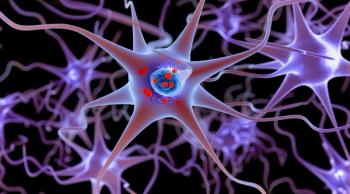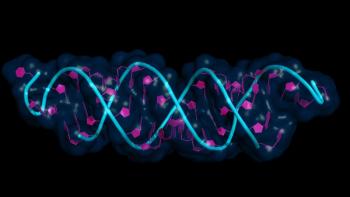
- BioPharm International, October 2021 Issue
- Volume 34
- Issue 10
Next-Gen Technologies Tackle Drug Delivery Challenges
The complexity of newer biotherapeutic molecules calls for alternative drug delivery strategies.
For a biotherapeutic to be effective at treating disease, the manner in which the therapeutic is delivered in vivo plays a significant role. The need for new, and oftentimes innovative, drug delivery systems is related to the drug substance, which informs the final formulation that the end product must use for optimal therapeutic effect as well as shelf-life stability. As such, the biopharma industry is exploring next-generation drug delivery approaches to meet the needs of new and increasingly complex biotherapeutics.
Antibody potential and limitations
The current challenges to biologic drug formulation center around antibodies, which make up the majority of biologics under clinical development and that are licensed for use, says David Bunka, PhD, chief technical officer, Aptamer Group, a company specializing in the development of next-generation aptamer molecules, which are derived from oligonucleotides and function as an antibody alternative. Bunka explains that the specific targeting ability of antibodies has allowed leaps in therapeutic innovation and the ability to treat diseases in new ways.
“Antibodies can be conjugated to a variety of payloads, such as small-molecule drugs for chemotherapy, radionuclides for radiotherapy or imaging, and oligonucleotides for gene therapy. However, as application of this technology has increased within the therapeutic pipeline, the significance of some of the limitations of antibodies has been highlighted,” Bunka says.
Biologics are typically administered via intravenous injection (IV), which allows for maximum efficacy; however, many of these molecules are highly sensitive to their environment and can be rapidly denatured or can aggregate in vivo, Bunka explains. These events can reduce the effective therapeutic dose that reaches the target tissue and give rise to unwanted toxic side effects within the patient.
Size is a major limiting factor in biologics formulation, making delivery challenging. Bunka notes that there is a move in drug development towards “subcutaneous injection as a preferred and more patient-tolerable approach.” A key issue, he says, is balancing the small injection volume with the necessary high concentration of API. “As you increase the therapeutic concentration, the viscosity of the dose increases, which can cause problems with isotonicity of liquid formulations and make it both difficult and painful to administer,” Bunka says. Using large molecules, such as antibodies, reduces the potential acceptable dose for subcutaneous injection.
The large molecular size of biologics also poses another issue: access to the site of action in vivo. “For therapeutics, such as immuno-oncology targeted biologics, the large size of antibodies often prevents them from penetrating solid tumors, precluding targeted treatment and leaving the therapeutic antibody in the surrounding tissues or blood for extended periods,” explains Bunka, adding that this extended residence time in tissue or blood can lead to further off-target or toxicity effects.
Another key challenge in current biologic formulations is their structural complexity, says Bunka. Biologics are far more complex than traditional small-molecule drugs, which gives rise to difficulties in processing, logistics, and long-term storage. “This can create problems with stability during processing and has the potential to result in a loss of activity and increased immunogenicity for the biologic product following patient administration,” Bunka states.
Innovating drug delivery
To tackle the issues encountered in formulating large complex molecules such as antibodies, work is being done to develop nanoparticle drug delivery systems that can incorporate specific biologics for targeted delivery to the site of action, says Bunka. “Incorporation of biologics or therapeutic payloads into these nanoparticles enables specific targeted delivery whilst forming a protective barrier around the specific payload to reduce the potential for denaturation or aggregation,” he says.
Bunka also states that, in order to deliver new treatments to help a wider population of patients, improve current treatments, and make treatments more “patient friendly”, the biologics industry must continue to innovate. The industry must also be driven by new biomarkers and a more detailed understanding of disease. “This includes enabling the gaps where antibody-based drug delivery systems have not been effective to be filled,” he says.
“Despite numerous new and improved drugs and gene therapies being developed, the delivery of these molecules to specific cells and tissues remains a major translational challenge. Enabling targeted delivery of therapeutic molecules to the proposed site of action could offer better patient treatment across numerous indications,” Bunka states.
He explains that targeted delivery to specific organs or cells, rather than systemic administration of the drug, is more effective and can come with less patient side-effects as well as offering the benefits of increased potency, flexibility in dosing, increased patient safety and tolerability, and the potential to address new tissues and diseases with these systems.
In addition, targeted delivery systems are tuned to the specific requirements of the disease target and delivery mode. “Numerous strategies are being explored: from extending half-life through methods such as binding human albumin, to delivering chemotherapeutics into the tumor microenvironment of difficult to penetrate solid tumors, and targeting gene therapies to new tissues, such as kidney or the brain, to generating new medicines with the potential to treat previously intractable conditions, such as Alzheimer’s disease or multiple sclerosis,” says Bunka.
Next-gen delivery technologies
Among the next-generation drug delivery technologies in development today are lower molecular weight affinity ligands for targeted delivery of conjugated payloads. Bunka states that these novel delivery vehicles include antibody fragments—such as Fab fragments—camelid antibodies, nanobodies, andoligonucleotide affinity ligands (aptamers, e.g., Optimers). Many of these smaller biologics (aptamers, camelids, and nanobodies) are now progressing through the clinic as alternatives to standard antibodies, Bunka notes.
These alternatives aim to increase access to the in vivo site of action to address new targets and improve therapeutic efficacy. The use of smaller biologics will be coupled with the ability to develop superior subcutaneous formulations, containing increased dose-per-injection volume, compared to standard antibody formats, explains Bunka.
In particular, Optimers (Aptamer Group) area next-generation aptamer developed for the delivery of a wide range of therapeutic cargo. They deliver high-specificity target binding in the same manner as antibodies, says Bunka. “They can be targeted to specific proteins, cells, or tissues for precise delivery of the intended therapeutic. For example, it is well recognized that antisense oligonucleotides (ASOs) are difficult to target to specific tissues, such as muscles. Conjugation of a therapeutic ASO to a muscle-cell targeted Optimer could increase the proportion of the ASO that effectively reaches and penetrates the muscle,” Bunka explains. He says that this conjugation can be used to target diseases such as Duchenne’s muscular dystrophy or spinal muscular atrophy.
Bunka also explains that rapid Optimer discovery enables the acceleration of pipeline progress, with the anticipated benefit of significantly reducing time to clinic while at the same time mitigating development risk and cost through early indications of success.
“The wider target range of the Optimer platform, compared to protein-based affinity ligands, such as antibodies, allows new targets and therapeutic strategies to be pursued,” Bunka says. As these ligands are approximately 10 times smaller than antibodies, they can yield both improved tissue penetration and uptake for inhalation therapy and subcutaneous injections.
Beyond targeting single molecules as direct conjugates to affinity ligands for targeted drug delivery, additional developments in next-generation drug delivery technologies include the targeting of nanoparticles bearing encapsulated payloads. Encapsulation protects non-target tissues from potentially toxic effects, while ensuring that the intended site of action receives the full therapeutic dose. “We are experienced in working with a variety of nanoparticle types to conjugate Optimer ligands to the nanoparticle as a strategy to promote in-vivo targeting to the site of action, such as a solid tumor,” says Bunka.
Commercial potential
Many next-generation drug delivery technologies are approaching the clinic, but new demands such as alternative cargo and increased tissue targeting are pushing this field to innovate further. For example, as new gene editing technologies, such as CRISPR, approach the clinic, there will be a need for delivery of large multi-macromolecular payloads, and the delivery technology for these payloads is still at research phase. Such delivery technologies could include novel delivery vesicles or nanoparticles with appropriate in-vivo targeting, says Bunka.
“The COVID-19 pandemic demonstrated the impressive ability of the pharmaceutical industry to rapidly innovate and deliver new therapeutic modalities and vaccines. These new innovations could hold huge promise for many fields of medicine, but may need to be supported by the development of novel drug delivery systems to ensure applicability to some harder to reach tissues and targets,” Bunka says.
Many affinity ligands such as protein scaffolds in development for drug delivery face issues, such as immunogenicity, that yet prevent them from being feasible commerically. The use of these affinity ligands (as antibody alternatives) has the same potential for immunogenic responses as seen for many therapeutic antibodies, Bunka says. “These are issues that have even appeared during the latter stages of development at Phase III, resulting in significant loss of time and [greater] costs to the developers,” he cautions.
According to Bunka, protein-based affinity ligands face the obstable of taking a long time to develop and bring to market. Bunka notes that, following initial discovery of the appropriate protein ligand, there are many additional production and scale up processes and costs that must be undertaken develop a high-performance molecule.
Newer drug delivery vehicles, such as Optimer ligands, have been engineered to overcome these potential development issues. “Oligonucleotide therapeutics have shown significantly reduced immunogenicity compared to protein-based molecules. This reduces the potential risk in development while delivering equivalent or improved performance in drug delivery,” says Bunka.
Because new drug delivery systems are offering the potential to target new tissues and therapeutic targets, they present a possible future where new diseases can be treated and where patient care can be improved.
“Many drug developers are now focusing on methods to deliver drugs across the blood-brain barrier,” says Bunka. Overcoming the blood-brain barrier has proven particularly intractable for antibodies because of their large size, but has been shown to be possible with oligonucleotide affinity ligands, according to Bunka.
“The ability to deliver therapeutics across the blood-brain barrier creates new potential to treat a range of neurological conditions, from neurodegenerative diseases to epilepsy or brain cancers. Similarly, the potential to improve access to solid tumors with improved drug delivery could increase treatment efficacy and patient outcomes across a range of cancers,” states Bunka. These conditions have previously been difficult to precisely target, which has driven the development of solutions via an improved drug delivery system approach.
A closer focus on nucleotides
With the important potential posed by nucleotide-based drug formulations, it is not surprising that much work is being done by researchers to overcome challenges in their development, says Nigel Theobald, CEO of N4 Pharma. Challenges to nucleotide-based formulations include achieving successful delivery to the target cells; protecting any nucleic acid from early or rapid degradation in the body; reaching the desired combination of high loading, controlled release with extended half-life, no leakage, and no interference with the biological functionality of the attached nucleic acid payload; and ensuring stability, good shelf life, and easy storage of the formulated product.
Furthermore, good biocompatibility, low toxicity, and a clear understanding of the mode of action of the delivery system are also important factors, says Theobald. “To achieve this, many believe that nanoparticle delivery is critical to enabling effective use in a therapeutic setting,” he states.
Theobald explains that, following early experiments using simple, direct delivery methodologies, encapsulating the nucleic acid in lipid nanoparticles (LNPs) emerged as the standard first-line approach to achieving the in-vivo performance required for nucleic acid molecules, RNA in particular (with electroporation for DNA). Challenges remain, however, and issues such as the propensity for LNPs to accumulate in the liver, which leads to unwanted toxicity, and the complexities of developing optimal formulations, have driven researchers further into finding improved or alternative delivery technologies.
Administration of nucleotide-based drugs is largely limited to the parenteral route, moreover, and with the biopharmaceutical industry increasingly considering patient-centric medicines, new technologies are being investigated to deliver biological molecules by alternative routes. The “holy grail” of drug delivery remains the use of inhalation or oral delivery, Theobald says. Next-generation drug delivery systems could, therefore, help to overcome the hurdles attached to formulating for these routes of administration.
Emphasis on targeted delivery
Because of the ongoing challenges with delivering effective biotherapeutics in vivo, the targeted delivery approach has risen to the forefront of the drug delivery technologies in development currently. Whether that be through the use of ligands and/or nanoparticle systems, this targeted delivery approach is designed to maximize the efficiency of cellular uptake following administration, says Theobald.
“At N4 Pharma, we have been developing a novel silica nanoparticle technology for the delivery of vaccines and drugs, with a particular focus on supporting the commercialization of cancer treatments and viral vaccines based on RNA and pDNA,” Theobald says. He explains that the company’s technology, Nuvec, which are silica nanoparticles, have a unique spiky surface structure, coupled with polyethyleneimine (PEI). This design simply and effectively traps and protects nucleic acid as it travels to the cells.
“The cationic nature of the surface on the nanoparticle ensures effective initial contact and subsequent uptake by the cell. In the case of RNA, the load is delivered to the cytoplasm, and for DNA, the nanoparticle facilitates delivery directly to the nucleus. Nuvec can also easily be functionalized with the addition of ligands,” Theobald further explains.
Theobald points out that particle engineering is another area of rapid development for alternative drug delivery technologies. With particle engineering, researchers are looking to improve the delivery of drugs to the lung—spray-drying and super-critical carbon dioxide (CO2) fluid technologies are examples of the techniques being employed. For oral delivery formulations, enzymatic protection and permeation enhancing techniques are increasingly being investigated to effectively deliver biologics, he says.
Impact on commercial prospects
In the case of nucleotide-based therapeutics, having a drug delivery vehicle, especially a viral vector, in the manufacturing process adds an additional layer of complexity to the process, Theobald emphasizes. “Scientists must ensure that the vector is of good quality and also focus on its mechanism for release, which can be both costly and time consuming—as well as adding additional risk to what is already a challenging process. Any improvement to that process could result in nucleotide-based therapeutics being available more quickly,” he states.
“A big challenge for many of these new technologies is creating solutions that can be easily scaled up. We saw throughout the COVID-19 pandemic the issues faced by RNA/DNA vaccines using lipid nanoparticles, where the sub-zero storage requirements limited their rollout significantly. In addition, supply has been restricted due to shortage in both lipid components and assembly technology at scale,” Theobald continues.
The importance of nucleotide-based therapeutics, including vaccines and genetic modification, has grown more evident as they have begun to make a large impact in treating viral and bacterial outbreaks and rare and difficult-to-treat genetic diseases. “In the case of cancer, they look likely to take the lead, particularly with vaccine based immune-oncology approaches and direct alteration in cellular systems using SiRNA [small interfering RNA]. There is also CAR [chimeric antigen receptor] T cell therapy, which has been on the market since 2017. They too are genetically manipulated, and there is a large market for using nucleic acids to introduce the CAR,” says Theobald.
He notes, however, that there is an important difference between efficacy and effectiveness of the therapeutics that are available and being developed. As such, more work still needs to be done on drug delivery systems. “The development of smart drug delivery systems (nanocarriers) will improve drug efficacy, reduce costs, and improve storage, and ultimately lead to better treatments for the patient,” Theobald asserts.
Furthermore, the biopharma industry is also reflecting the drive toward a more precision approach to medicine, he concludes. By using relevant data to inform clinical decisions, clinicians have the capability to tailor a patient’s care based on their perceived risk and/or response to certain diseases. Theobald says this will lead to a truly personal, targeted treatment plan.
About the author
Feliza Mirasol is the science editor for BioPharm International.
Article Details
BioPharm International
Vol. 34, No. 10
October 2021
Pages: 12–16
Citation
When referring to this article, please cite it as F. Mirasol, “Next-Gen Technologies Tackle Drug Delivery Challenges,” BioPharm International 34 (10) 12–16 (2021).
Articles in this issue
about 4 years ago
Trends in Outsourcing of Bioprocess Developmentabout 4 years ago
Getting a Nose for Vaccinesabout 4 years ago
Large-Scale Single-Use Bioreactors Prove Mettle Amid Growing Demandabout 4 years ago
Limits and Successes Define Large-Scale SUBs Pathabout 4 years ago
Designing a Control Strategy for Facilities with Single-Use Systemsabout 4 years ago
Increased Data Flow Demands Strategic Managementabout 4 years ago
Public Trust in Medicine Quality as Public Health Challenges Emergeabout 4 years ago
Bioanalytical Studies Support Biosimilars Approval Pathwayabout 4 years ago
FDA Moves to Advance Innovative Excipientsabout 4 years ago
New BeginningsNewsletter
Stay at the forefront of biopharmaceutical innovation—subscribe to BioPharm International for expert insights on drug development, manufacturing, compliance, and more.





